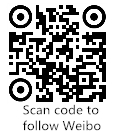STOmics reveals unparalleled insights into physiology by helping us map the hundreds of trillions of cells which make up the body across space and time.
When the first pictures from space were beamed back to earth from the Hubble Space Telescope more than 30 years ago, mankind was amazed by the amount of detail in the images and the new stars and galaxies that could be seen. Thirty-two years later with enormous advancements in technology, the first images from the James Webb Space Telescope completely redefined our understanding again. Its enormous detail and resolution allowed us to see inside and behind gaseous clouds to understand their formation better over time.
The transformations that the James Webb Space telescope is bringing to the study of astronomy are mirrored by the technology advances SpatialTemporal Omics (STOmics) is bringing to the study of the human genome. Just as the solar system is comprised of millions of stars and planets which are forming and changing continuously, the human body is comprised of hundreds of trillions of cells, which must be studied closely to understand how the body works, and why sometimes it does not and results in diseases.
STOmics and BGI Group’s Stereo-seq spatial multi-omics technology, can help us improve our understanding of physiology by mapping a full catalogue of cell types and cell states across space and time, organ by organ.
How is this possible?
The human body exists in 3D. For it to work properly, everything must be in the right place, with cells, organs and organ systems arranged correctly. With Stereo-seq, we can peak inside and see not only what is going on in our cells, but also how they all function together. This is because the technology allows us to explore spatial biology with unprecedented field-of-view and resolution, enabling us to produce wide-view images with an exceptionally high-level of detail.
To examine just a cell alone would give us one piece of the puzzle. But to look at the relationship between cells and their relative locations enables us to see how different parts of the body operate together, whether that be in regulating blood pressure, metabolism or beyond.
The final piece in the puzzle is studying cells not just within the context of one another, but across time. The human body is not static, but ever-changing, with developments in our genetic activity taking place constantly. With STOmics, we can measure these changes, and track the very moment they happen as the technology allows researchers to take high-resolution and wide-view images over a period of time. Just like studying stars in space, STOmics enables us to see not just the size, shape and make-up of a cell, but where it is in the body and crucially, how it develops.
It is critical we get our heads around this, as deepening our understanding of physiology underpins all our advances in diagnosing and treating disease. If we know where something is happening in the body, and when it takes place, we can improve our understanding of what effects it has and why it matters.
For both the James Webb Space Telescope and BGI’s Stereo-seq technology it is an increase in the size of the technology that makes the critical improvement. We usually think of technology advancements in computers and phones in terms of smaller and thinner, but the primary mirror of the James Webb telescope at 6.5-meter is more than 2.5-times the size of the Hubble primary mirror enabling it to capture longer and dimmer wavelengths of light. Similarly, the biggest Stereo-seq sequencing chip is 13 cm × 13 cm which is 500 times bigger than other spatial transcriptomic technology’s capture area, enabling scientists to sequence a complete tissue section of a large organ at a time, and with a more than 100 billion pixel resolution the result is 200-times sharper than an image taken on an iPhone 14 Pro.
With these two technology advancements, scientists are understanding both space and physiology like never before.





